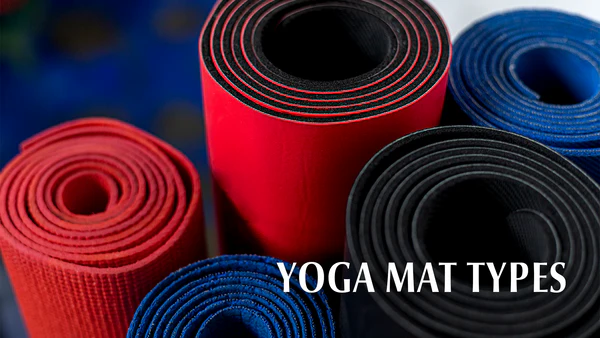Breaking the Mold: Unconventional Materials used in Modern Yoga Mats
In the world of yoga, the humble mat is a vital companion on the journey to finding inner peace and physical well-being. Traditionally made from rubber or PVC, these mats have served practitioners faithfully for years. However, in recent times, innovative yogis and manufacturers have been breaking the mold by exploring unconventional materials for yoga mats. The use of a medicine ball rack as a material in modern yoga mats is an innovative and unconventional approach that challenges traditional notions of what a yoga mat should be. This unique blend of functionality and creativity allows for greater versatility and adaptability in yoga practice.From cork to jute, bamboo to hemp, these alternative substances not only offer unique textures and aesthetics but also provide eco-friendly and sustainable options for those seeking a more conscious approach to their practice. Join us as we dive into the fascinating world of unconventional materials used in modern yoga mats, uncovering the benefits they offer both to our bodies and our planet.
Traditional Materials: Rubber, PVC, and Jute
Rubber, PVC, and Jute are three traditional materials that have been used in the production of yoga mats for many years. Rubber, specifically natural rubber derived from trees, is a popular choice among eco-conscious yogis due to its biodegradable nature. It provides excellent grip and stability during poses, making it ideal for sweaty hot yoga sessions. On the other hand, PVC (polyvinyl chloride) mats are known for their durability and low cost. While they may not be environmentally friendly like natural rubber mats, they can withstand heavy use and last longer.
Jute is an interesting material that has gained popularity in recent years as a sustainable alternative to traditional yoga mat materials. Made from plant fibers, jute mats offer natural grip and a textured surface that helps prevent slipping. Moreover, jute is highly recyclable and biodegradable, making it an appealing option for eco-friendly yogis seeking alternatives to synthetic materials like PVC.
Unconventional Materials: Cork, TPE, and Microfiber Towels
One of the biggest trends in yoga mat materials is the use of unconventional materials such as cork, TPE (Thermoplastic Elastomer), and microfiber towels. These materials bring a whole new level of functionality and sustainability to the world of yoga mats. Cork, for example, is not only eco-friendly and biodegradable, but it also provides a natural grip that gets better with sweat. This means less slipping during those intense poses and more focus on your practice.
TPE, on the other hand, is a non-toxic material that offers excellent cushioning and support. It’s also lightweight and easy to clean, making it perfect for yogis on the go. And let’s not forget about microfiber towels – these high-performance textiles are known for their absorbency and quick-drying properties. Many yoga enthusiasts love using them as an extra layer on top of their mats or even as standalone options for hot yoga sessions.
Benefits of Unconventional Materials
Yoga has evolved significantly over the years, and so have the materials used in yoga mats. While traditional mats made of rubber or PVC are still widely popular, a new wave of unconventional materials is making its way into the yoga community. These innovative materials offer a range of benefits that can take your practice to the next level.
One such material gaining popularity is cork. Cork, harvested from the bark of cork oak trees, has unique properties that make it ideal for yoga mats. It provides natural traction even when wet, allowing for greater stability and grip during challenging poses. Additionally, cork is antimicrobial and hypoallergenic, making it perfect for those with sensitive skin or allergies. Another unconventional material making its mark in modern yoga mats is jute. Jute fibers come from the stalks of jute plants, which are 100% biodegradable and renewable. This eco-friendly material offers excellent grip on both sides of the mat and provides a natural texture that feels great underfoot. Moreover, jute has moisture-wicking properties that prevent sweat from pooling on the surface, keeping you cool and dry throughout your practice.
Environmental Considerations
In addition to exploring unconventional materials used in modern yoga mats, it is crucial to consider their environmental impact. As more people embrace sustainable living practices, the demand for eco-friendly and ethically sourced yoga products has grown significantly. Several companies have risen to this challenge by utilizing recycled materials like rubber and cork for their mats. Not only do these alternative materials reduce waste by repurposing discarded resources, but they also provide a natural texture that enhances grip and cushioning during practice.
Moreover, environmental considerations extend beyond the composition of a yoga mat itself. Many manufacturers are now focused on minimizing packaging waste whenever possible. This means opting for biodegradable materials or using minimal packaging design that still ensures the product’s protection during transportation. By choosing yoga mats that prioritize eco-conscious production methods and conscious packaging design, practitioners can align their practice with sustainable values and contribute to a healthier planet.
Conclusion: The Future of Yoga Mat Innovation
In conclusion, the future of yoga mat innovation is one that embraces sustainability, functionality, and comfort. As the demand for eco-friendly products continues to grow, we can expect to see more yoga mats made from unconventional materials such as cork, jute, and recycled rubber. These materials not only have a lower impact on the environment but also offer unique benefits like natural antimicrobial properties and increased grip.
Aeromat stands out as a pioneer in this field, offering mats made from sustainable and eco-friendly materials such as cork and jute. Additionally, advancements in technology will likely play a significant role in shaping the future of yoga mats. We can anticipate smart yoga mats that are embedded with sensors to provide real-time feedback on posture and alignment. These mats could potentially revolutionize home practice by offering personalized guidance and helping yogis deepen their practice safely. Furthermore, as the popularity of yoga expands globally, there may be a greater emphasis on cultural inclusivity in yoga mat design. Mats inspired by different cultures or featuring artistic designs could help create a sense of connection and celebration within the global yoga community.
Overall, with constant innovation and an increasing focus on sustainability and functionality, we can look forward to exciting developments in the realm of yoga mat design that enhance our practice both physically and spiritually.
ALSO READ / business understanding the basics of seo


Post Comment